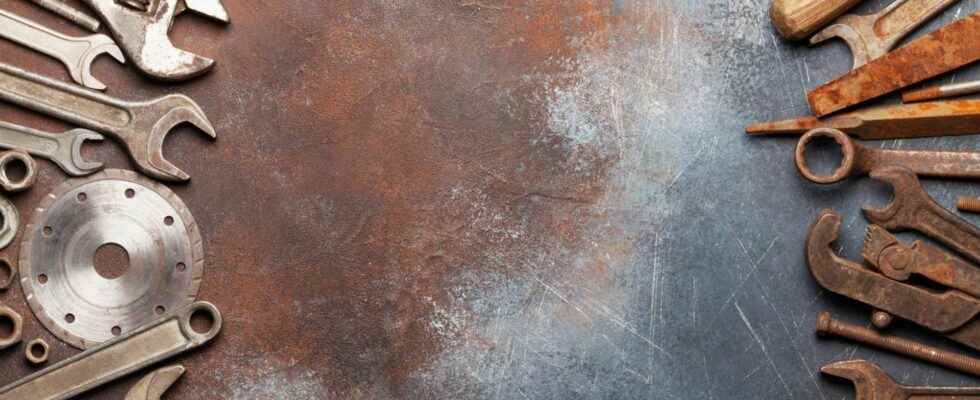It damages and reveals small reddish-brown traces. You guessed it, over time, rust develops insidiously on old tools, bicycle chains or various iron objects. So how to get rid of it? Focus on techniques based on white vinegar to overcome it!
Some metals are naturally oxidizable. the zincthe copperI’money and thealuminum oxidize on the surface while the iron rust in depth. It’s the only kind ofoxidation which can alter objects. To the extreme, rust can be disastrous and eat away at metal gradually. Hence the importance of watching for the slightest traces to eradicate them!
Commonly called “rust”, the oxide of iron is the result of a type of corrosion who reaches the iron and others alloys containing iron such as melting and thesteel. A chemical reaction occurs if the ferrous object is exposed to water andairthis is called theredox : a molecule of iron is oxidized, another is reduced. A reddish-brown substance then develops which, in fact, modifies the color iron, but also its properties. He goes from one matter resistant and durable with a crumbly and brittle aspect. The iron is an electrically conductive metal, a characteristic that disappears when it oxidizes since rust is an insulator.
If the iron object remains in permanent contact with the water and the air, it can degrade in its entirety. It will obviously be impossible to get rid of it when the rust has greatly attacked the object, however, a few spots of iron oxide and a surface that is still slightly rusty can be erased.
To remove traces of rust from a knife, tool or any other small or medium-sized ferrous object, white vinegar can be effective.
With white vinegar: tools covered in rust, oxidized bolts or nails can look like new in a few hours. Immerse them in a basin filled with white vinegar overnight. This product acid will help remove them. The next day, if you notice some traces of rust, do not hesitate to soak the objects longer. Finally, rinse them with water and dry them with a cloth.
With hot white vinegar: hot white vinegar can remove light traces of rust. So, after heating the white vinegar in a bowl (be careful, however, of the acid fumes that are released!), pour on the rust or dip it in it, then rub with a cloth to make it disappear, rinse and dry .
With white vinegar and bicarbonate of welded : make a paste by adding a few drops of white vinegar to baking soda. Be careful, in contact with each other, the two ingredients foam, so it is essential that the quantity of baking soda is the largest in the mixture. Although vinegar is an acidic product and bicarbonate a basic product, their combination improves the cleaning effect when the effervescence is over. Then cover the rusty part with this paste and leave to act. Finally, rinse and wipe the object with a cloth.
With white vinegar and coarse salt: if you don’t have baking soda in your cupboards, coarse salt is an equally effective alternative. Indeed, the sodium chloride, another name for salt, is also taken into account in the composition of bicarbonate. Thus, eradicating rust on a ferrous object can take place via the white vinegar and coarse salt mixture. First, moisten the rusty part with white vinegar and then add a few grains of coarse salt. The resulting reaction will gradually eliminate traces of rust. In the same way as before, rub with a cloth, rinse and dry.
